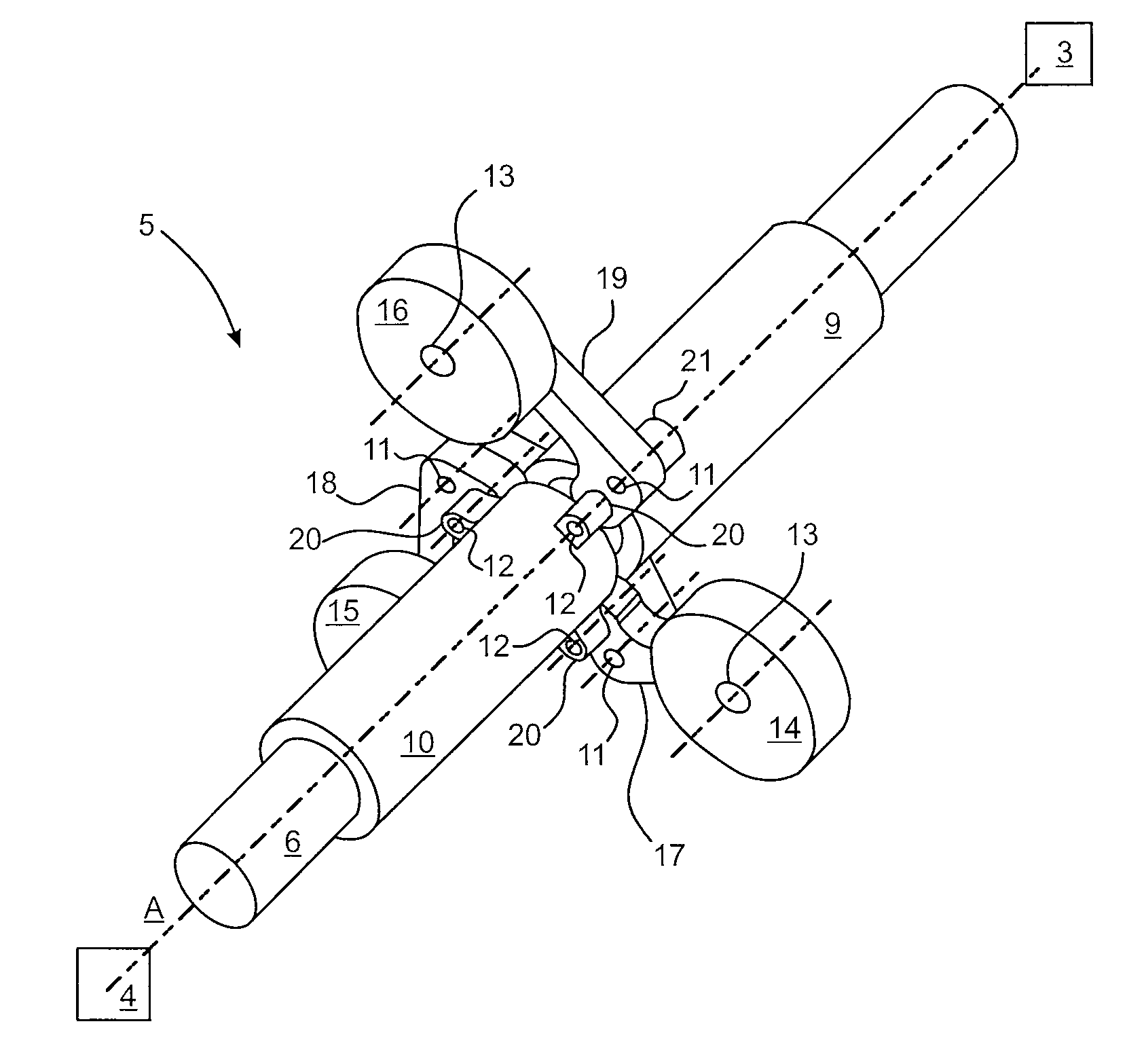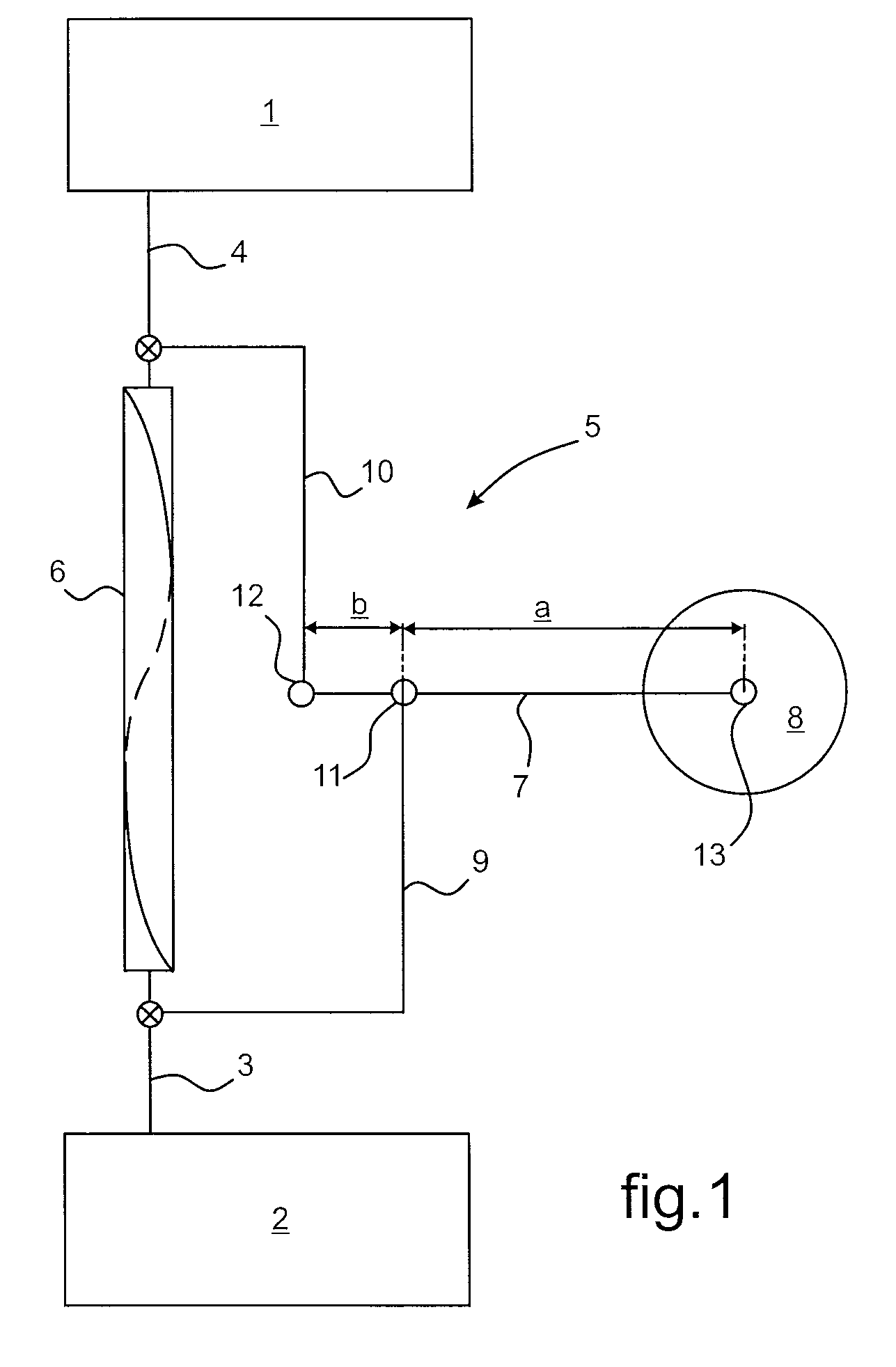Mechanism for attenuating torque pulsations between an engine and a rotorcraft rotor driven by the engine
a technology of torque pulsation and rotorcraft, which is applied in the direction of propellers, propulsive elements, water-acting propulsive elements, etc., can solve the problems of rotorcraft torque pulsations that are naturally induced between the drive shaft, fatigue failure of the members making up the transmission system, and excessive torque pulsations. to achieve the effect of restricting the overall radial size of the mechanism and avoiding excessive mechanism siz
- Summary
- Abstract
- Description
- Claims
- Application Information
AI Technical Summary
Benefits of technology
Problems solved by technology
Method used
Image
Examples
Embodiment Construction
[0044]FIG. 1 shows a mechanism for fitting to a rotorcraft, being interposed between a rotor 1 and an engine 2, in particular a diesel engine, for driving the rotor 1 in rotation. The mechanism is for damping torque pulsations as induced when the rotor 1 is rotated by the engine 2.
[0045]A drive shaft 3 that is engaged with the engine 2 communicates with a driven shaft 4 that is engaged with the rotor 1 via torsion means 5 that are interposed between them. The torsion means 5 associate a torsion shaft 6 that is engaged both with the drive shaft 3 and with the driven shaft 4, and a lever arm 7 for spontaneously causing the torsion shaft 6 to be deformed in twisting under the effect of the induced torque pulsations. The movement of the lever arm 7 in response to the induced torque pulsations is caused spontaneously by a mass 8 that is movable under the effect of the force of inertia. An inlet shaft 9 and an outlet shaft 10 are each engaged at one respective end with the torsion shaft a...
PUM
 Login to View More
Login to View More Abstract
Description
Claims
Application Information
 Login to View More
Login to View More - R&D
- Intellectual Property
- Life Sciences
- Materials
- Tech Scout
- Unparalleled Data Quality
- Higher Quality Content
- 60% Fewer Hallucinations
Browse by: Latest US Patents, China's latest patents, Technical Efficacy Thesaurus, Application Domain, Technology Topic, Popular Technical Reports.
© 2025 PatSnap. All rights reserved.Legal|Privacy policy|Modern Slavery Act Transparency Statement|Sitemap|About US| Contact US: help@patsnap.com



